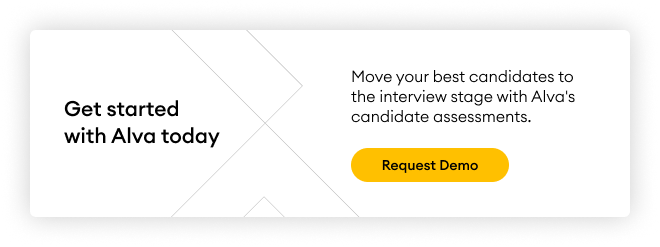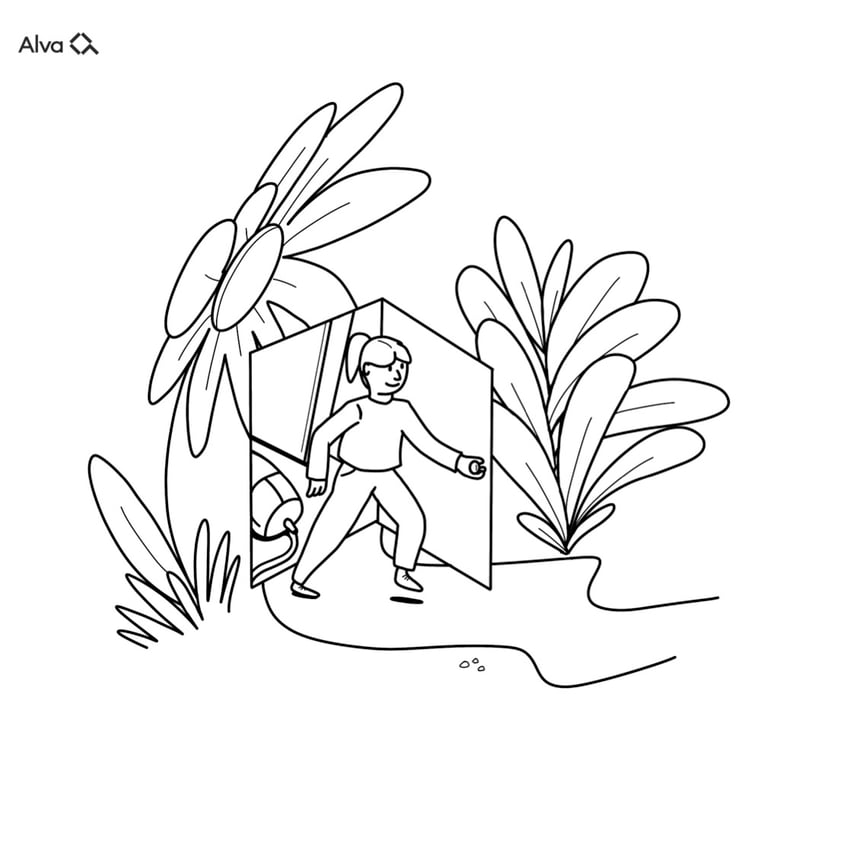Managers are gatekeepers between your employer brand and employee experience. Great managers help create a supportive environment where colleagues can bring their whole selves to work.
In turn, healthy, engaged employees are more likely to be content and productive at work—and are therefore less likely to become absent or leave. That's why organisations need to breed solid leaders who embody organisational values and band people together.
Cue our guide to supporting mental health at work! Side note: this guide considers the entire employment cycle, from hiring to managing mental health at work.
Why you should prioritise mental health at work
When researchers looked into why employees resign, they found a common denominator. Four in ten workers leave because they feel under-appreciated by their bosses and are overworked.What's more, poor employee wellbeing can harm companies' bottom line. For example, a UK study revealed how mental health-related absenteeism cost employers £43 billion in 2020. Moreover, 54% of workers who take two or more mental-health absences go on to resign.
But what happens when you have exceptional managers on your team? When leaders thrive at managing and fostering trusting relationships with their teams, they help make people feel psychologically safe. This increases the chances that employees will open up when experiencing difficulties without fear of criticism or judgement.
In short, good managers make employees happier.
How so? Two factors jump out:
- Organised managers give their employees the context, guidance, tools, and independence to do their jobs and minimise their frustrations and stress levels. The result? Employees feel like they have a sense of agency and freedom over their work.
- Managers who are empathetic, communicative, and patient give space for employees to let their walls down and express themselves openly.
How to manage mental health at work
A three-tier approach to managing mental health at work is recommended:- Focus on building a hiring process that enables you to find only the most suitable candidates
- Highlight what you're doing to support employee wellbeing early in the recruitment process
- Invest in mechanisms and resources that facilitate psychological safety
Embrace an evidence-based recruitment process
Building evidence into your process— like using pre-hire assessments to determine role fit or structuring your interviews— is an excellent way to predict a candidate's potential to succeed.Evidence-based hiring shifts the emphasis away from you and your gut to structured, objective criteria. As such, it vastly increases your chances of hiring the right person. Data-led recruiting further helps teams focus on criteria like a person's cognitive abilities and competencies rather than their work history.
Use psychometric assessments to spot top talent
Psychometric assessments measure a person's cognitive abilities and personality traits, helping recruiters understand which candidate has the potential to excel in the hiring process.
Assessments based on personality science, like the Big Five Model of Personality, can deliver accurate candidate profiles, helping you decide which candidates to advance with. As a bonus, these assessments are incredibly effective at reducing bias in the hiring process.
Did you know? Alva's logical reasoning and personality assessments test a range of factors like logical ability, conscientiousness, extraversion, and emotional ability needed for a candidate to succeed in a job role. These assessments are a tried and tested way for companies to spot, evaluate, and interview job-fit candidates in one platform.
Create realistic job descriptions
Realistic job descriptions help you filter out unqualified candidates while keeping relevant candidates interested. The more accurate you are in the job description and what the role entails, the more likely you will capture the right talent pool in your pipeline.
Tweak your recruitment process
- Be clear about your company's commitment to diversity and inclusion during the recruitment process, including in your job description.
- Provide guidelines and training for all employees to ensure that candidates are treated equally at all hiring stages. Tip: Pay special attention to unconscious bias.
- Make it clear in your job description and interview process that your company promotes mental health and supports people through the good and bad times. This is an excellent time to list key company perks that encourage a healthy work-life balance, like a remote-friendly culture, flexible hours and annual leave.
- Ensure people can disclose a mental health problem confidentially in the application process. Information about health or disability is anonymised or separated from the hiring team.
Know what solid managerial leadership looks like
It's easy to say we need good managers on the team, but harder to pinpoint what exactly to aim for and how to go about it. So what does effective managerial leadership look like? At Alva, we focus on the following aspects:Lead by example: Encourage your team to take breaks, work sensible hours, and take annual leave. If needed, this can also entail providing guidance around checking inboxes and accessing work stuff after hours. This same rule should be applied to managers too! Model these standards so your team members feel like they can also prioritise downtime and set boundaries.
Normalise mental health: Regularly check in with your employees and see how they're faring. Give them an open, safe space to talk and raise issues.
Pay attention: Include an agenda item at team meetings to check how everyone is getting along.
Make time: Be available and schedule one-to-ones and catch-ups. This signals that you are open and care about your working relationships with your team. If some or all employees work remotely, ensure they know how to get in touch with you and that there is no proximity bias around favouring coworkers in-office.
Treat people like people: Treat people how you want to be treated! Praise good work, offer support, and identify areas where employees could grow and upskill. Ask for feedback too as this makes employees feel more involved and signals that their contribution matters.
Connect everyone to the big picture: Make sure employees feel included in the big organisational vision and show how their contribution adds to the vision and mission of the whole company. This can also be highlighted at broader team meetings involving leadership.
Dedicate time to coaching, learning, and growth: Ensure employees feel confident in their roles, supported, and equipped, which will let them do their jobs to the best of their ability. It's also about dedicating time to hear what areas they would like to develop - and then supporting them with their growth journey.
Tips to support employees' wellbeing
You could have the most fantastic management team, but people will still experience poor mental health at work. Knowing how to spot the signs of stress or poor mental health early on can help keep issues at bay before they escalate into a crisis or sickness absence.- Make a habit of checking in: Regularly checking in with your team helps you workshop problems before they crop up or escalate. These conversations are also an excellent opportunity to foster relationships and make employees feel comfortable to share and talk about what's on their minds.
- Active communication: Keep your team informed and looped in. Let your employees know if there's an important change or team update. You can also reduce stress by setting expectations on workloads, deadlines, task priorities, etc.
Know to spot workplace triggers like:
- Employees are working long hours and not taking breaks.
- Unrealistic deadlines or expectations
- Fast-paced environments in the lead-up to project launches
- Friction between coworkers or poor communication
- Job insecurity or problematic change management
Conversation checklist
Knowing what to say— and what not to say— when you're about to have a difficult conversation with an employee matters. Handling conversations mindfully can make your colleague feel comfortable to share.- Avoid interruptions
- Ask simple, open, non-judgemental questions
- Avoid responses that may be deemed judgemental or condescending
- Speak calmly
- Maintain eye contact
- Listen actively
- Encourage the employee to speak
- Show empathy and understanding
- Focus on the person, not the problem
- Avoid making assumptions or being prescriptive
How to respond when someone shares they're struggling:
- Choose an appropriate place to allow for maximum privacy and comfort
- Listen actively and try to avoid making assumptions
- Keep the conversation confidential unless expressed otherwise, or you believe a person's life is at risk
- Develop an action plan
Other ways to support an employee
There are some things managers can do to mitigate mental health symptoms and any unforeseen impacts on employee performance. Considering every individual is different, these are optional and should be treated as prompts.Possible adjustments:
- Flexible work hours to accommodate the individual
- Working from home for a certain period (particularly if you have an in-office policy)
- Adjustments to break time
- Give employee time off for appointments related to their mental health, like therapy
- Temporarily changing duties- offloading an employee's task plate
- Increased support from the manager, buddy, or mentor
- Enabling access to a safe space where the person can have some time out or get support
To wrap up!
Ultimately, a healthy business translates to a healthy work culture, with organisations performing better when their workers are healthy, focused and motivated.
The best way to build a safe workplace is to hire the right people to lead from a place of empathy and compassion and build the structures in place to support employee wellbeing and promote a work-life balance.







